Resilience is the ability of a network to handle disruptions and continue offering its services to users at an acceptable standard. Network operations can be threatened by issues like misconfigurations, power outages, or operator errors. When such eventualities happen, the end users are unable to access the network, negatively affecting an organization. Highly resilient networks can prevent this by restoring network operations as and when they go down.
There is little room for downtime in modern IT organizations. Gartner calculated that an organization loses around $300,000 for every hour of downtime, and there are other studies finding even this figure conservative. Downtime affects businesses on two levels: The actual loss of money due to business disruption, and then the often overlooked loss of reputation; after all, people hate seeing blue error screens or losing all the information they've entered.
To counter this, companies offer ever-better terms in their SLAs; for example, the five nines of availability for up to 99.999% uptime for network operations. This affords to around one minute of downtime per day. Such elevated standards can only be achieved with a highly resilient network infrastructure.
One way to guarantee continued network operations is to have a failover in place. This is called network redundancy. Redundant networks have multiple devices capable of performing the same operations. When one of them goes down, the other takes up its job and resumes its normal network operation.
An example of this are firewalls with duplicate connections to the network they're protecting. The secondary firewall receives periodic health reports from the primary. When it doesn't receive a report for some time, it assumes the primary is down and takes over its functions. The time taken for the secondary to assume the primary is down and take up its function is known as crossover.
While redundancy is a no-nonsense method for preventing downtime, resilience is more nuanced. It involves restoring network operations rather than outright replacing them. Networks run into a lot of issues, small and large, on a daily basis. It's tough and expensive to plan redundancies for all of them. We can work around this problem by reducing the time for fault identification and resolution.
High availability: This is a type of redundancy which minimizes downtime by instantly switching over to the failover. For instance, high availability routers check the status of their primary devices frequently. When failure occurs, they take over operations.
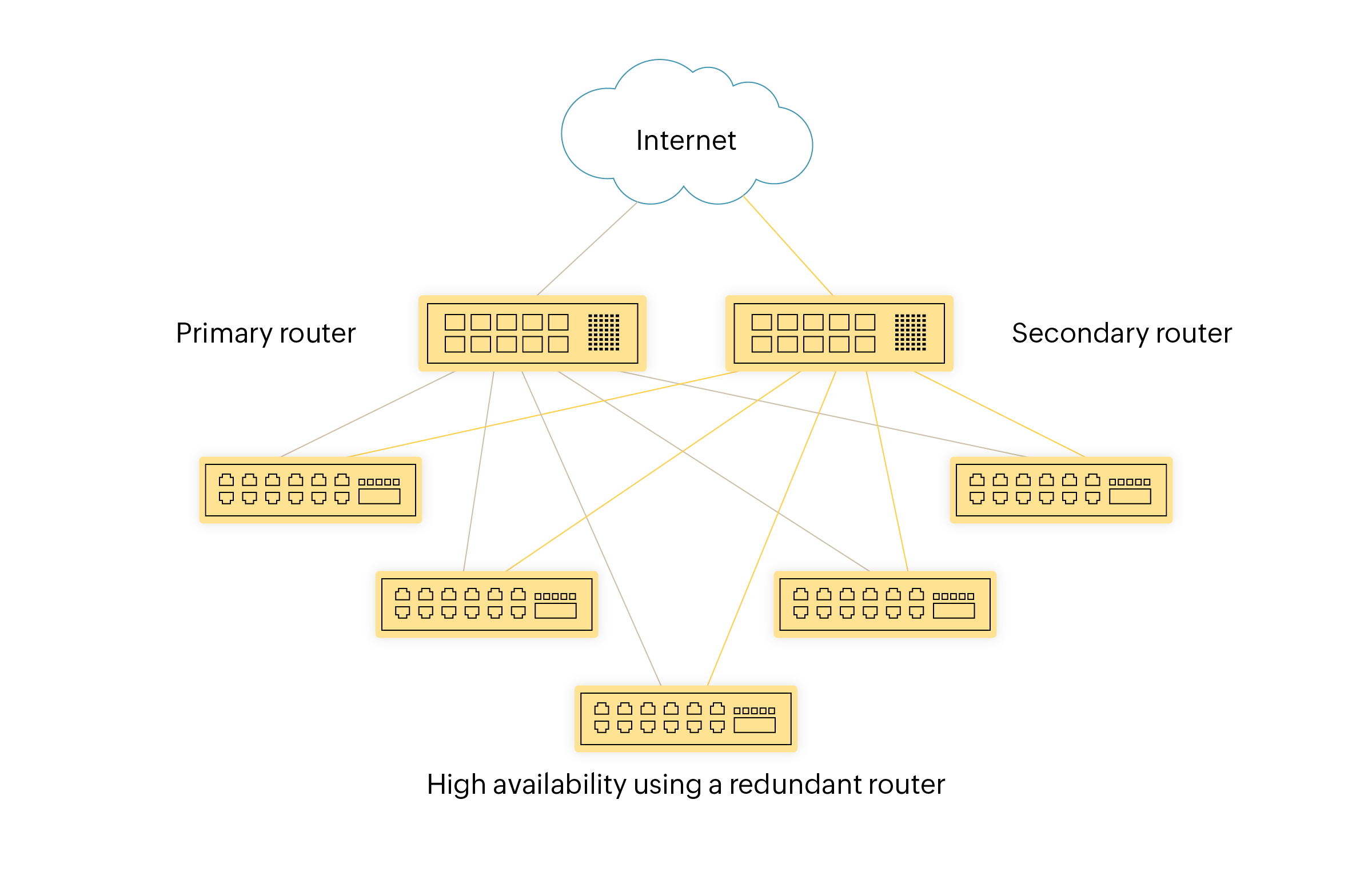
Fault tolerance: Sometimes, the primary device might have failed and there might be a delay before the secondary checks its status and takes over. Information entered by users during that time might be lost. Fault-tolerant systems eliminate this delay by having both the primary and secondary share the load. Both servers check each other's status. When one of them fails, the other assumes the full load. This way, even if its operations become limited, the network doesn't entirely go down.
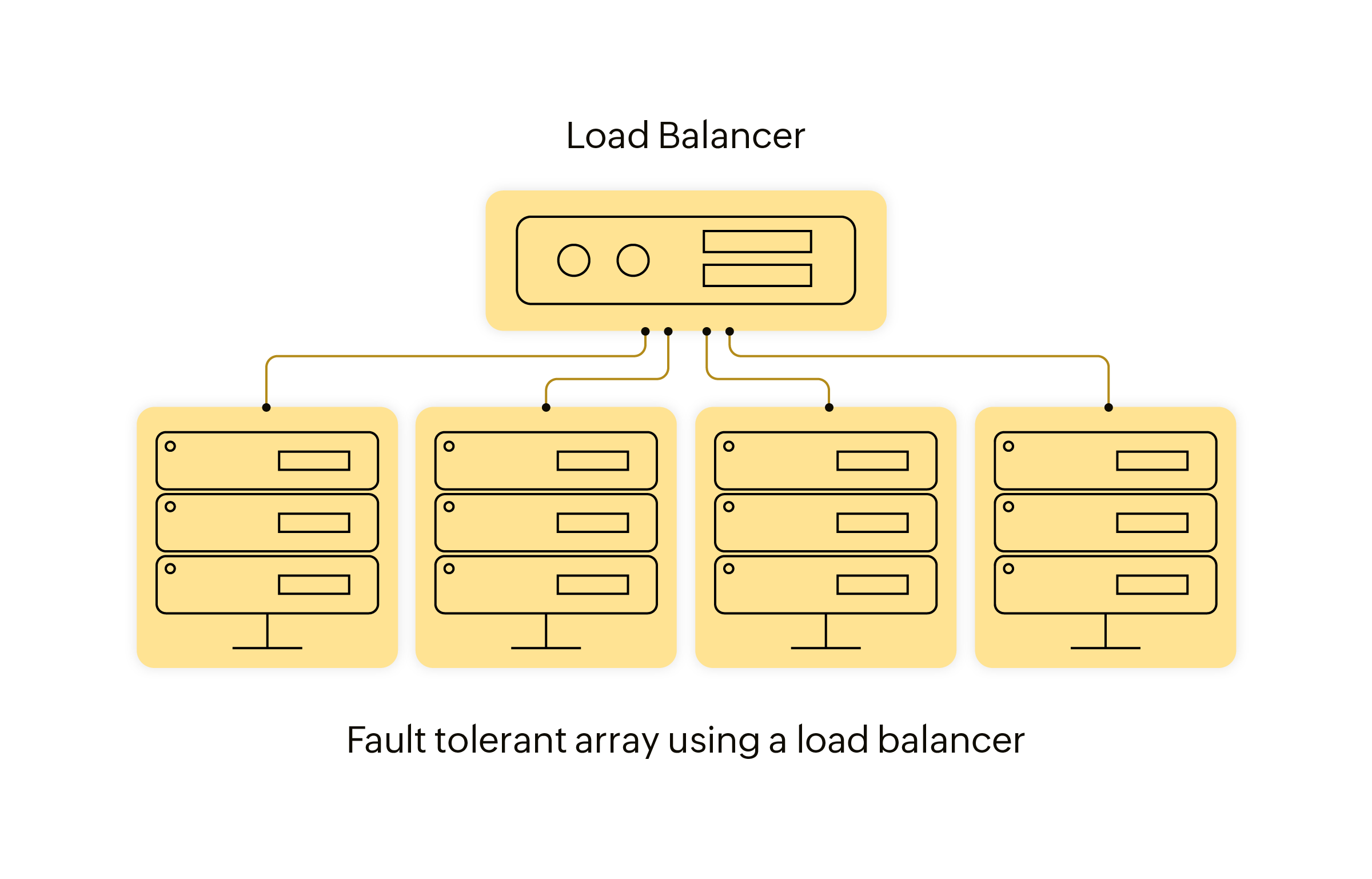
Replication: Network replication is a way of achieving redundancy by instantly mirroring all the data in the primary to the secondary. The primary and secondary servers will be synchronized, and data loss will be minimal.
Single point of failure: This term refers to a vulnerability in the network that can disrupt its whole operations. This could be a firewall behind which the network is placed, or a load balancer, or a cable line which connects it to the WAN. Network admins should try to eliminate single points of failure.
There are usually three causes for downtime. Known causes are the ones you are aware of and plan for. Maintenance and upgrades fall under this category. You can schedule these so that they don't affect network operations in any major way.
Then there are known unknown causes. These causes can't be premeditated, but you do know where to look for answers when they happen and how to fix them. This includes misconfigurations, human errors, device failures, or network outages. You have to find the cause of the issue quickly and rectify it.
Finally, there are unknown unknowns. These are events outside your control, like hurricanes, floods, lightning strikes, or man-made disasters. The best way to deal with unknown unknowns are to store data in mutiple sites, cloud storage, or data centers.
Making your network downtime-proof is difficult. Even if you follow standards and guidelines perfectly, there might be some issues that you just can't avoid. That being said, it always helps to be prepared. We've listed some tips and measures here that you can follow to improve the resiliency of your network infrastructure.
Using a network monitoring tool to watch over your network is the safest bet to protect your network from downtime. This way, you can discover network issues early and fix them proactively.
OpManager is a network monitoring tool that monitors all the components in your network and generates real-time alerts regarding any discrepancies. Such deep visibility into your network can certainly help. But OpManager goes one step further in improving your network resiliency with its advanced fault identification and resolution features.
Adaptive thresholds: OpManager's ML-powered adaptive thresholds help you refine your troubleshooting by eliminating false positives and alert floods. OpManager studies your normal network performance in a three-day training period, and afterwards it sets hourly thresholds to suit your network activity at that time.
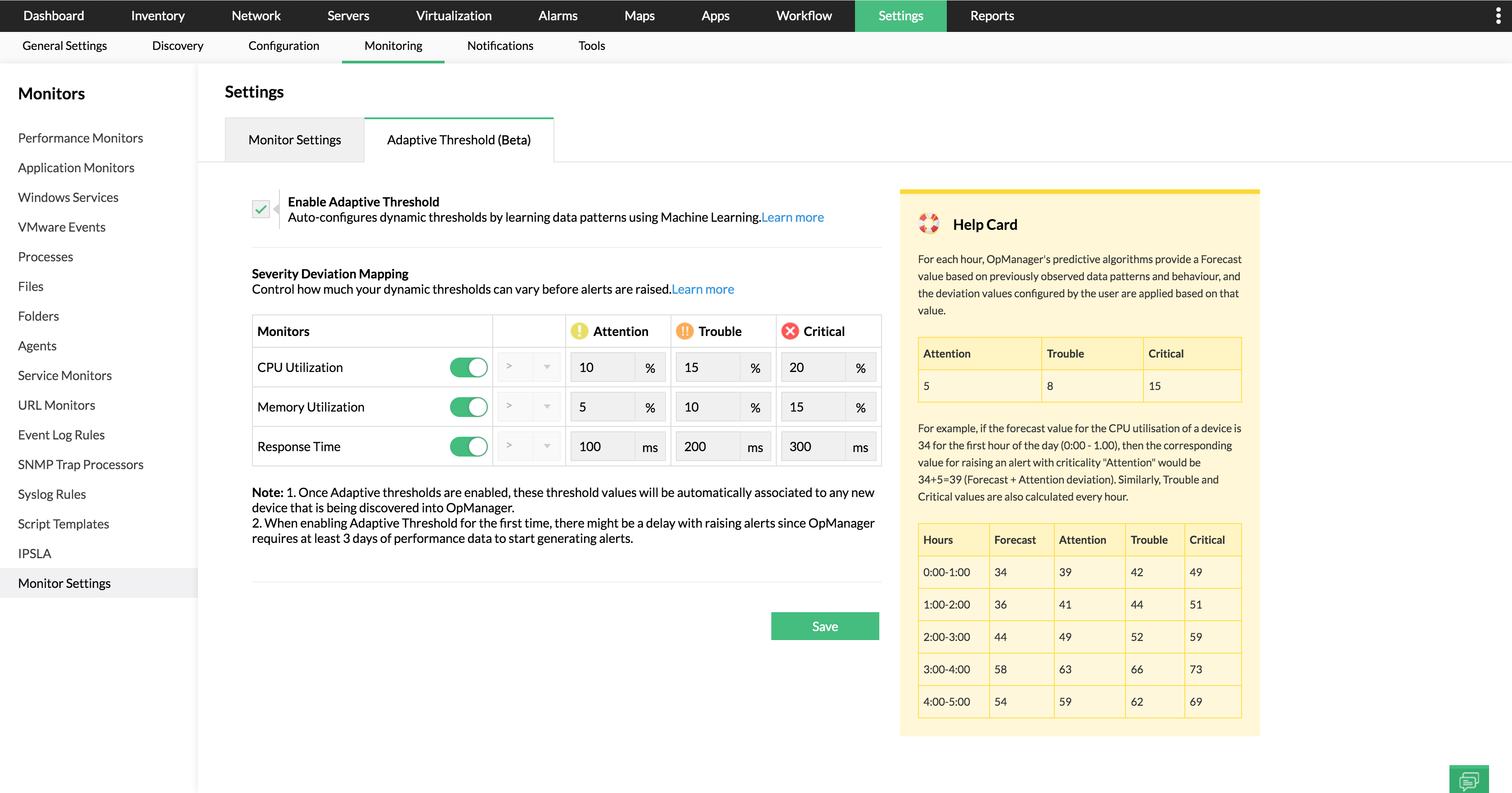
Automated workflows: Improve network resilience by automating basic troubleshooting operations. You can create workflows for actions like restarting a stopped service, clearing redundant alerts, checking if devices are responding, and executing scripts.
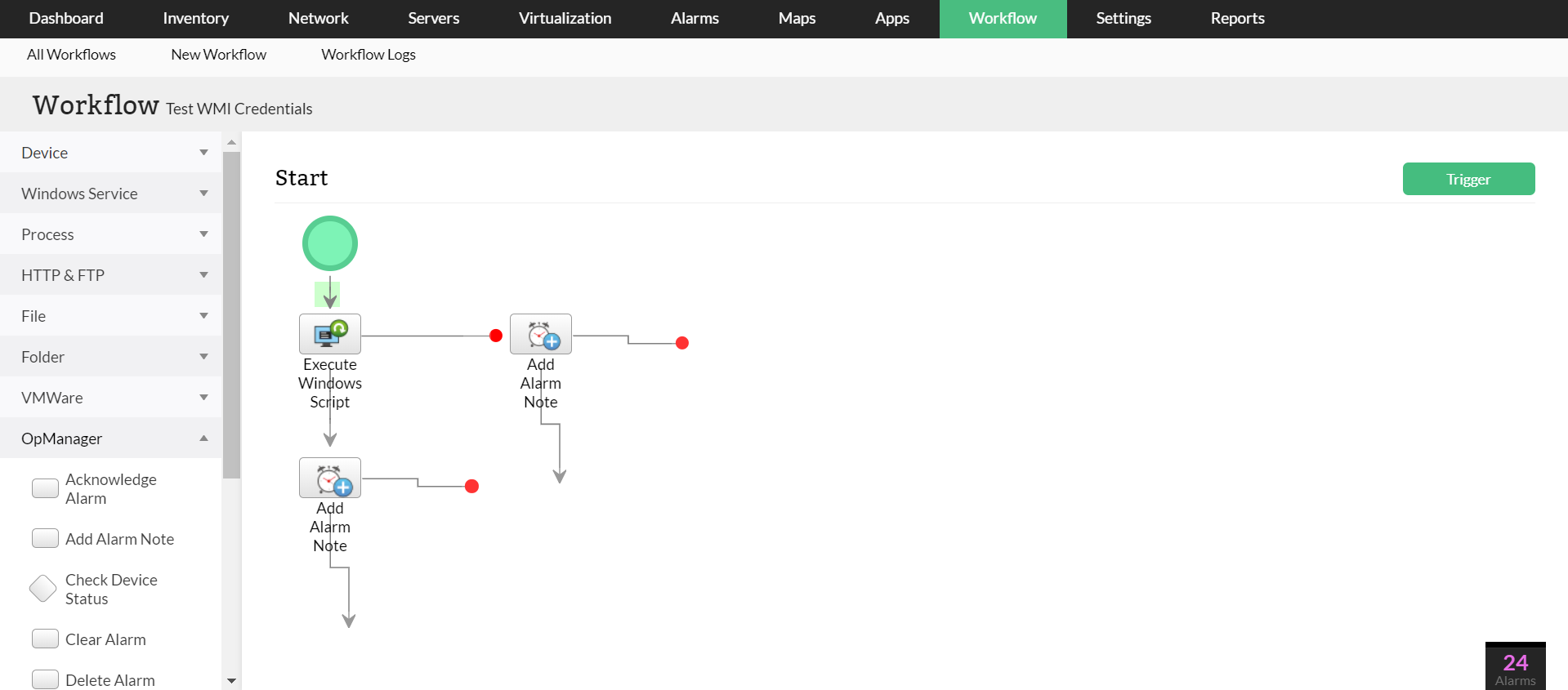
Root cause analysis: If an outage occurs, it's imperative that you find out what caused it as quickly as possible. OpManager's root cause analysis profiles help you correlate the data of up to 20 entities to track down the root cause behind an outage.
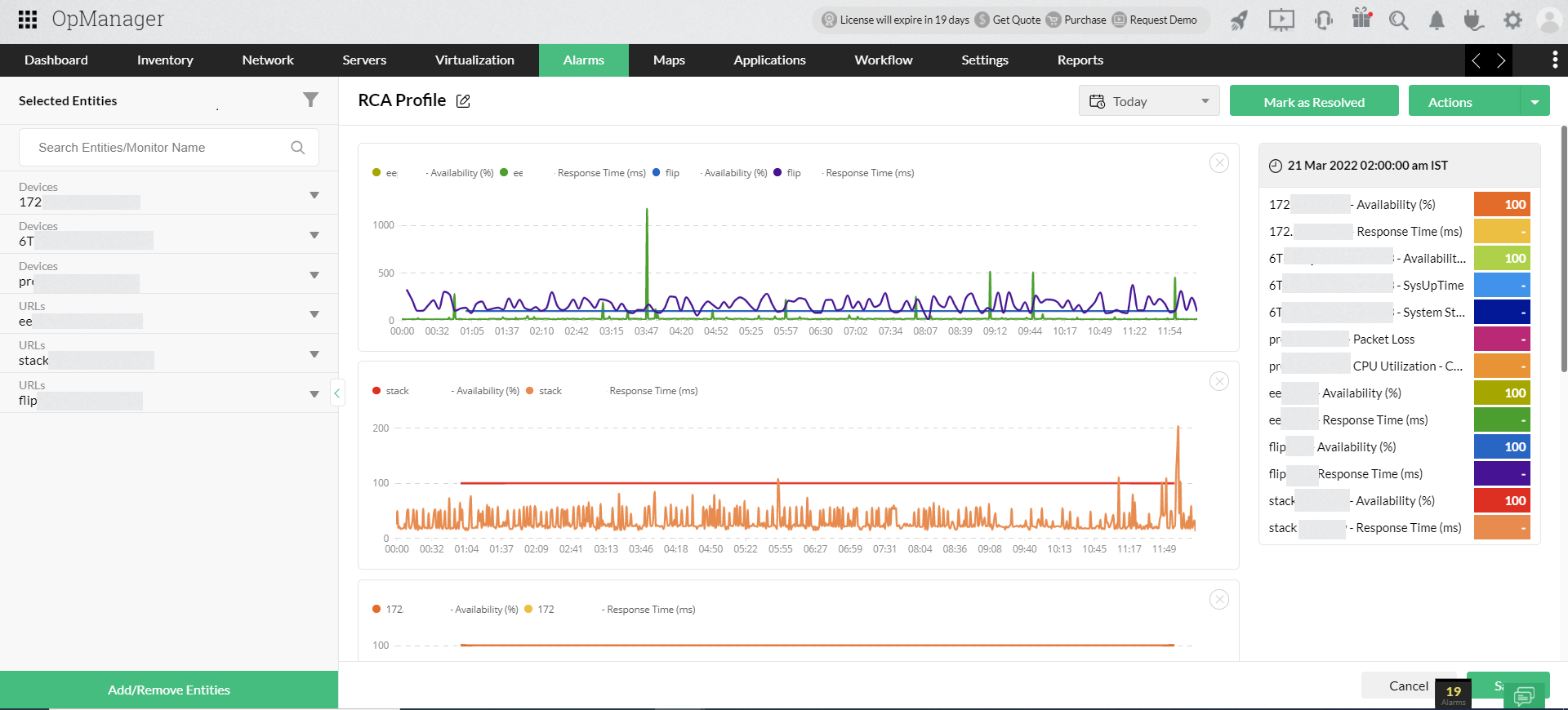
This is just the tip of the iceberg. OpManager comes loaded with a ton of other features and tools to toughen up your network against downtime. Download OpManager or try our free, 30-day trial to experience the difference.